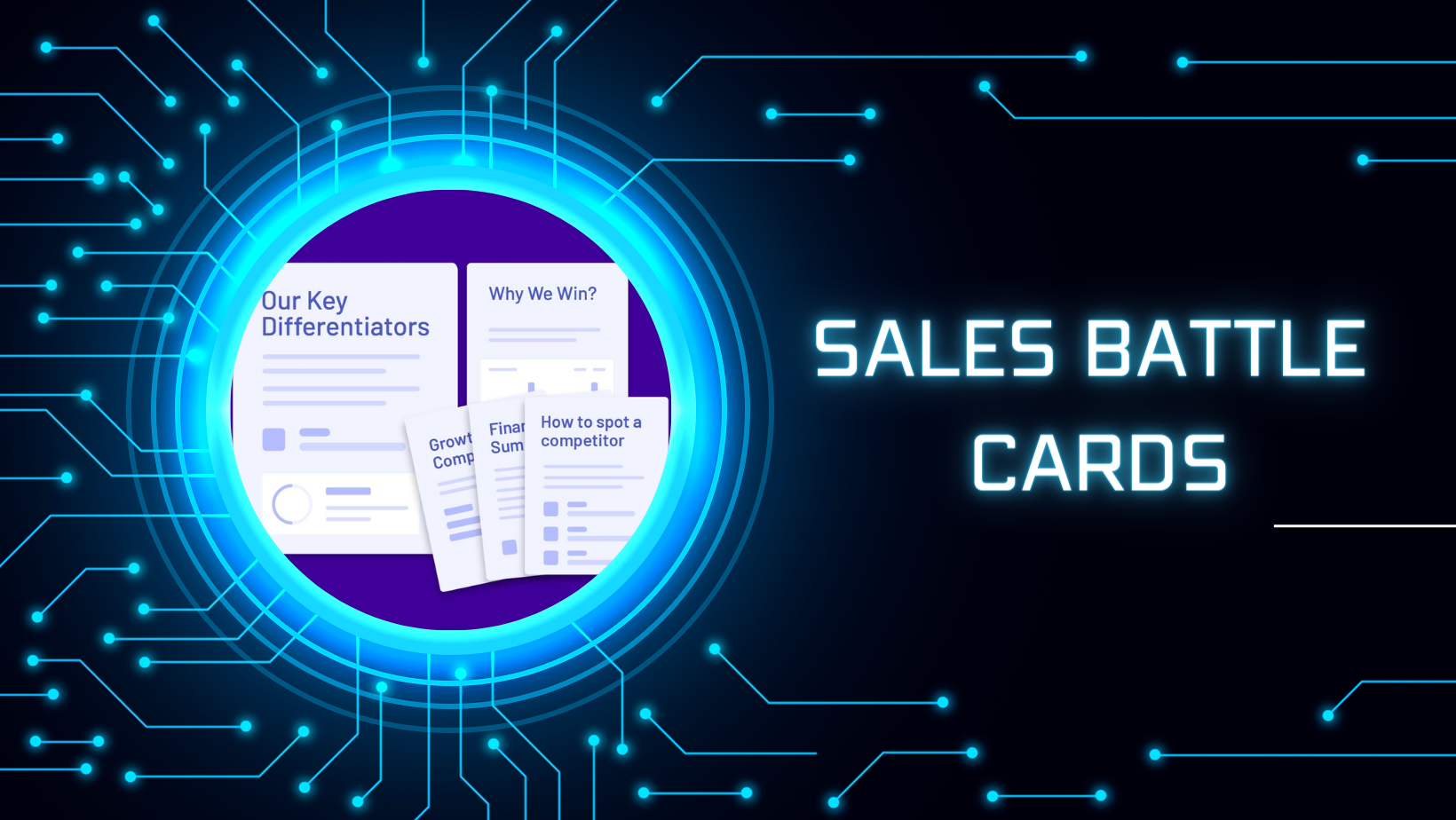Sales battle cards are useful documents that allow your team to prepare for calls in an organized, efficient manner. They can provide answers to common customer questions and objections as well as showcase different pricing packages.
As you create battle cards, keep accessibility top of mind. Store them in an accessible place such as your CRM or sales enablement platform for ease of use.
Product Battle Cards
Sales battle cards can provide your sales representatives with all of the tools necessary to succeed during high-stakes conversations with prospects. It can help answer common objections while outlining key differences between your products and those of competitors. Building one should not be done once; rather it should be an ongoing process that keeps up with changes in the market while gathering feedback from your sales team to make sure it remains accurate and relevant.
To create an effective sales battle card, it is best to collect pertinent intel from multiple sources – reviews and forums are especially helpful here – on both your product and competitors’ strengths and weaknesses. Be wary of overemphasizing competitor strengths; doing so could alienate prospects and result in lost business.
An integral element of a sales battle card is including your company’s pricing strategy. This helps your salespeople address common objections more efficiently, speeding up deal completion. Furthermore, including competitor customer satisfaction ratings may allow salespeople to position themselves as trusted advisors during high-stakes conversations with prospective clients.
Industry Battle Cards
Sales battle cards are documents used by Go-to-Market (GTM) teams to arm themselves with facts and tactics for winning deals more competitively. These one-page cheat sheets contain valuable information on competing firms such as their key differentiators as well as prewritten responses for common customer objections.
Battle cards should provide detailed competitor data as well as highlight what differentiates your product or service from competitors – this may involve listing features or detailing stories to demonstrate your unique value proposition. A well-written battle card can serve as an effective selling tool that helps close more deals quickly.
Once your battle cards have been written, it’s essential to regularly audit and update them. Since competitors may emerge or update features of their products without informing your sales staff accordingly, misinformation could spread. To safeguard against this potential mishap, set aside time every month to audit and update them.
Battle cards should also be kept somewhere readily accessible by sales team. A CRM may be ideal in this regard; that way, salespeople won’t have to look through messy shared folders or desktops for them.
Competition Battle Cards
When looking to increase sales team performance in an aggressive market, competition battle cards can be invaluable tools. These documents equip sellers with all the information needed for effective outreach and managing objections; helping them stand out among competitors and drive additional sales. However, creating an effective battle card requires thorough research and presentation in order to secure an edge in your marketplace.
As the first step of creating a sales battle card, identifying and understanding your competitors is paramount to its creation. This means understanding their type of products and services offered, how they compare with your own offerings and any key value points your product might possess over others. Furthermore, including competitive advantages that distinguish your business such as customer success stories or unique selling points may also prove helpful in building the card.
An essential aspect of creating a sales battle card is to identify common objections. Once identified, include them and their responses in your battle card to prepare sellers for potential obstacles during sales conversations. You could highlight challenges your client may be experiencing within an industry and how your product could address these concerns.
To maximize their impact, sales battle cards should be developed through collaboration among multiple teams – marketing, customer success, operations and product subject-matter experts should all have input into this effort. It is also crucial that these battle cards be updated frequently with accurate, up-to-date information regarding competitors.
Customer Battle Cards
Customer battle cards can help your sales team effectively address specific buyer objections and outshone competitors. They include key differentiators as well as common questions and concerns that customers have expressed; you can also use them to demonstrate how your product has helped other customers overcome similar issues – a powerful way of improving your sales success and giving reps confidence when pitching pitches.
To ensure accurate sales battle cards, ask your top sellers to assist in creating them. They should provide insights they’ve gained over time as well as customer stories and live examples that you can incorporate into the sales battle cards for your company.
Keep in mind that your sales battle card should be stored somewhere that will make it easy for salespeople to access and use. One effective solution would be storing them on a corporate wiki; this will allow you to classify battle cards according to purpose or exercise tags so salespeople can find them more quickly.
Your battle cards should also be regularly updated to include any new competitors and offerings from your company, giving your salespeople access to up-to-date competitive intelligence when preparing for sales calls.

